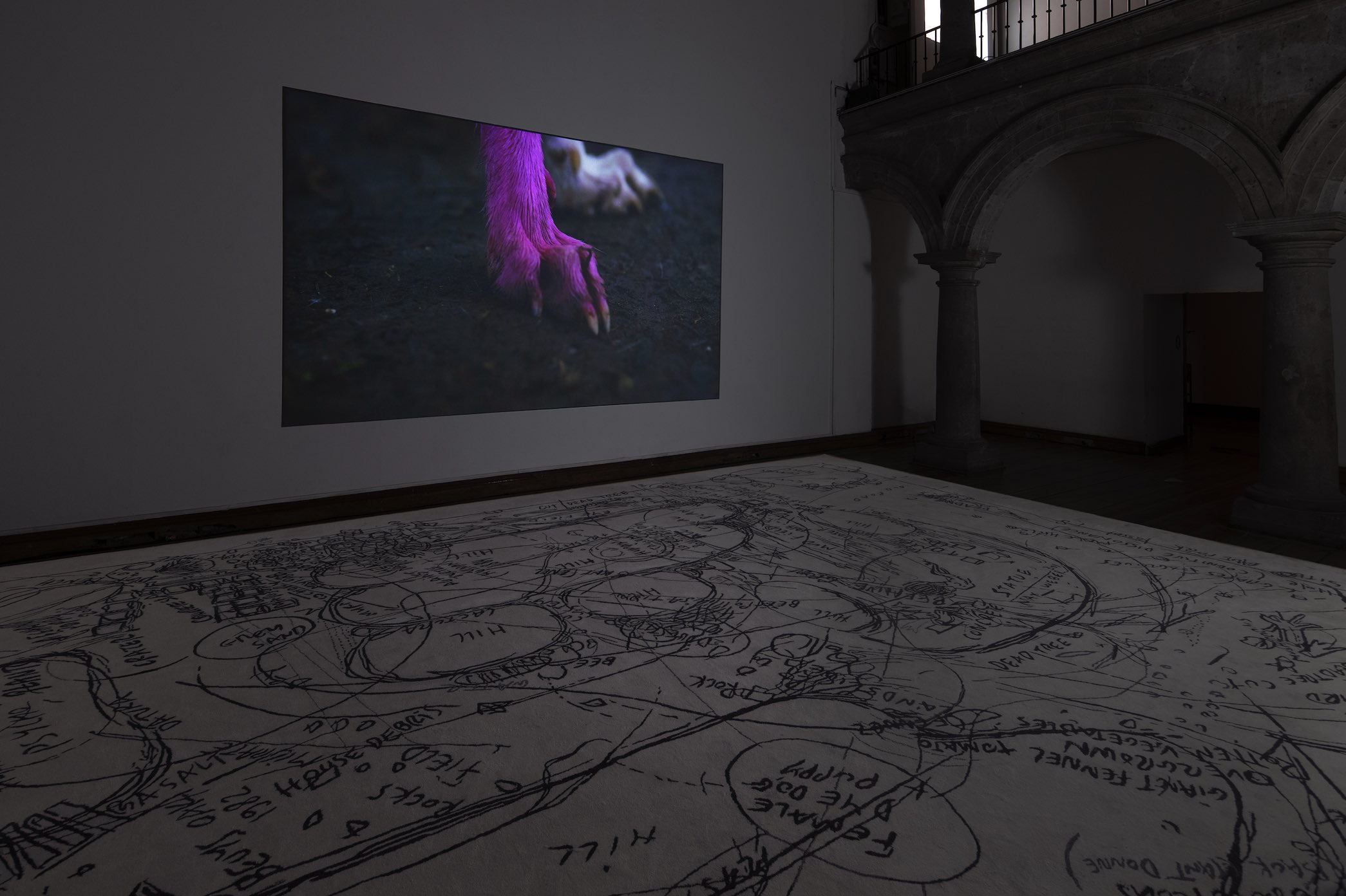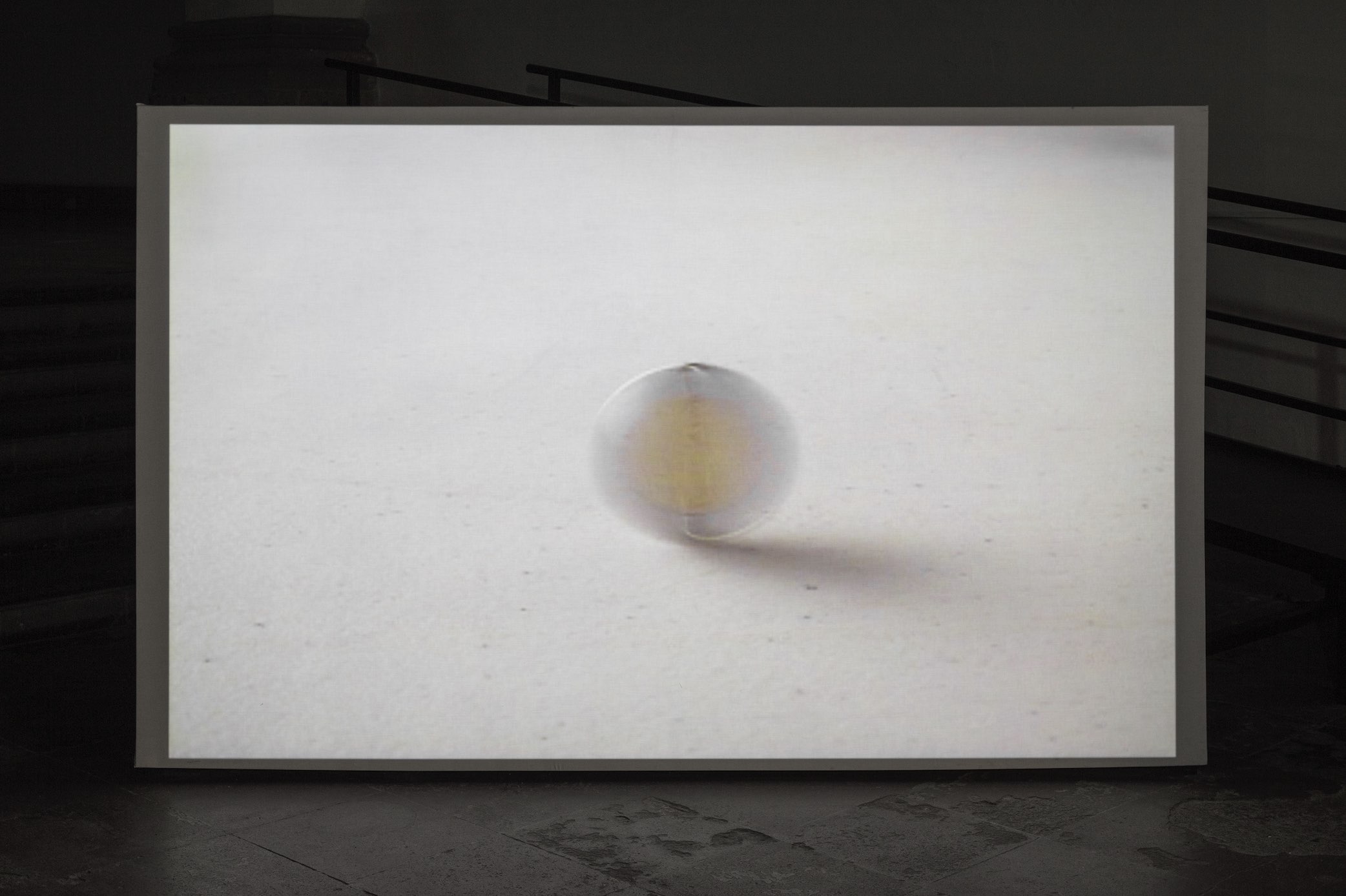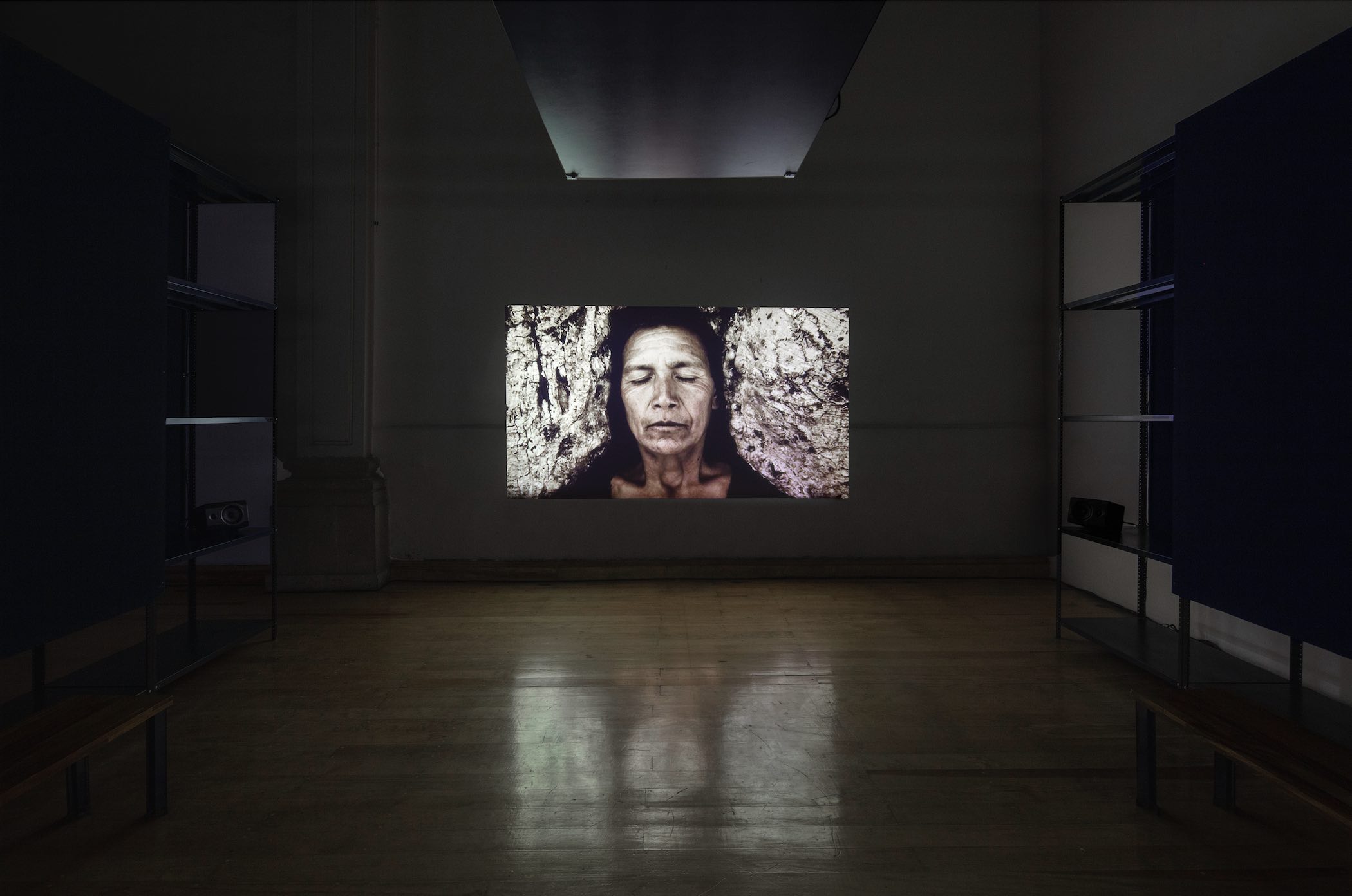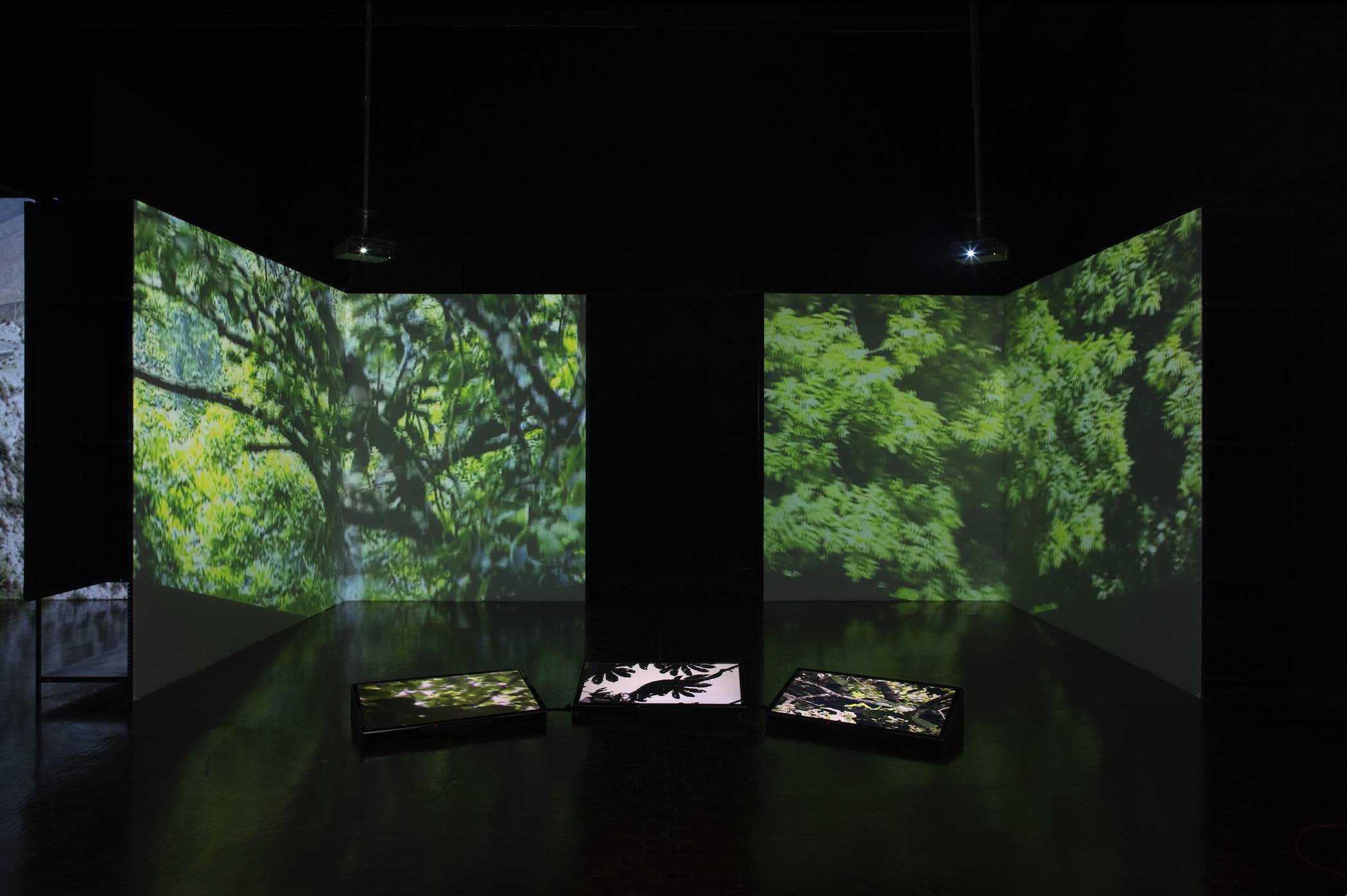
Review
Time of the Others: The Summer that Never Was (Videos from the CIAC Collection)
by Antonia Alarcón
Laboratorio Arte Alameda
Reading time
6 min
A few years ago, British scientists experimented with various vines, placing toothpicks 5 cm from their center so that the vines would grow turning around the picks, only to move the picks a further 5 cm and from there the vine would recommence its whirling dance. To their surprise, the fourth time they placed the pick at the site of the passionflower vine, instead of turning, it rather stretched its vegetable body 5 cm towards the toothpick. Prediction is one of the characteristics that we humans identify as a quality of intelligence: the power to make decisions based on learning. But prediction can only be given in time and with repetition. Without those elements, we are left stranded in a narrative without direction, since there would be no way of anticipating future events.
El verano que nunca fue [The Summer that Never Was] is a curatorial offering by Ruth Estévez currently on display at Laboratorio Arte Alameda, in Mexico City’s Historic Center. Based on a real climatic event in history, the year without a summer*1, Estévez examines the idea of time. What happens if there are no seasons? How do we perceive time if there are no changes? By weaving together the nineteen pieces*2, all of them part of the Isabel and Agustín Coppel Collection (CIAC), the curator offers a dislocated world based in the moment suspended on video: that which generates a feeling of estrangement in our not knowing where we are led by a narrative that never advances.
In this way, the exhibition puts parts of the psyche in check, suggesting something like the search for other temporal logics. They say that time does not really exist, but rather is the way in which the human brain makes sense of what we perceive in reality. By disarticulating time, language changes: it ceases to be progression in order to become contraposition, something invisible, a loop.

Upon entering, we are greeted by a coin that rotates without any goal—it neither falls nor stops, simply continuing in its movement—a sphere that exists only in the eye. Mauricio Alejo’s Esfera interminable takes us into the estrangement of a movement that is at the same time static. The loop is there in the repeated image, but also in the oscillation between photography and video: a moving coin becomes a static sphere that becomes a coin again, and so on. Video becomes photography once the moment is suspended in time. The camera operates in complicity with the eye, since movement does not exist in the video itself but rather in retinal persistence, in the ability of the observing brain to make sense of the frames. The camera is a cyborg apparatus, an extension of the human body meant to encapsulate with and for the human intellect.
I continue my tour. Sitting on the bench in front of me, some friends bounce their eyes back-and-forth between two screens on opposite walls, in an attempt to capture the entirety of a divided scene. Their heads move in the dark like a game of tennis. Shirin Neshat’s Tooba interprets a passage from the Koran in which the promise of paradise transpires in an enclosed tree on a mountain. Pilgrims stealthily approach through the fields and question us with their eyes, as though they were spies of this sacred moment. The piece is presented on a double screen in a dark room, installed in such a way that we can only see one screen at a time. Just as we begin to be absorbed by one of the narrations, the corner of our eye betrays us, spying on the second screen that which latently gives us a second look at the same story. Our attention is focused and divided at the same time, since in order to complete the story, we must (or must not) observe both screens. Thus, there are no two spectators who construct the same interpretation, since the story is completed using the rapid movements of our heads.

These and other pieces lead us to delve into the estrangement of dislocated time; the works constitute that layer of ash capable of distorting temporality. It is said that on cloudy days sunflowers assuage their failed search for the sun by counterposing their centers, looking at each other. The exhibition El verano que nunca fue is ultimately a reflection on the uncertainty of the immobile: something present in 1816’s year with no summer as well as something that we have collectively lived with in the pandemic. Faced with the stability of four walls and the instability of the world outside, many people sought certainty in the growth of a leaf, in the humidity that would expand on the ceiling, or in time’s passage through the body. The pieces in this exhibition are an invitation to delve into the duration of other realities: the time of children, of stones, of shadows. When there are no other references for time, when uncertainty is the guide for beings’ advancement, we can approach other views and also surrender to the time of others.
The exhibition will be open until July 3. The CIAC has also created a webpage for consulting the curation as well as some of the pieces. You can find it at this link.
Translated to English by Byron Davies

*1: In 1815, the eruption of a volcano in Indonesia covered the world in a layer of ash that caused the global temperature to drop dramatically the following year, resulting in no summer. You can read more about it here.
*2: The exhibition is made up of pieces by the artists Mauricio Alejo, Francis Alÿs, David Lamelas, Damián Ortega, Mircea Cantor, Shirin Neshat, Gary Hill, Doug Aitken, Jonathan Monk, Tacita Dean, Mario García Torres, Fernando Ortega, Diana Thater, Melanie Smith, Pierre Huyghe, Anri Sala, Superflex, Miguel Rael, and David Hammons.
Cover picture: installation view of the exhibition The Summer tha Never Was, 2022. Courtesy of the Laboratorio Arte Alameda and the CIAC. Photo: Ramiro Chaves.
Published on June 17 2022